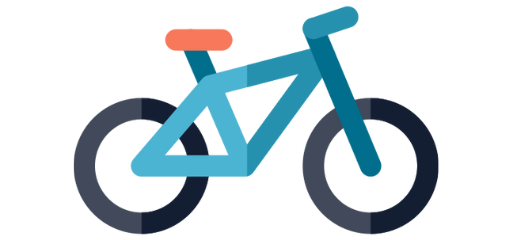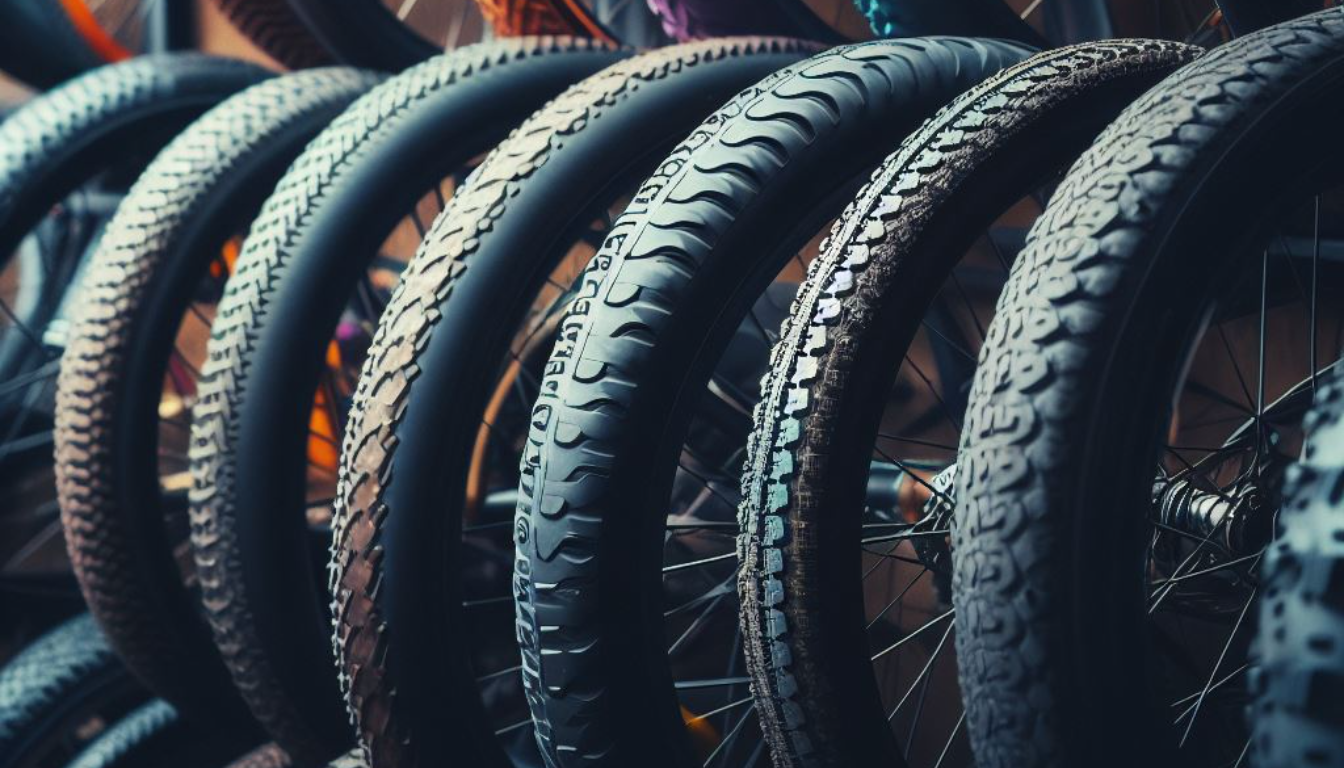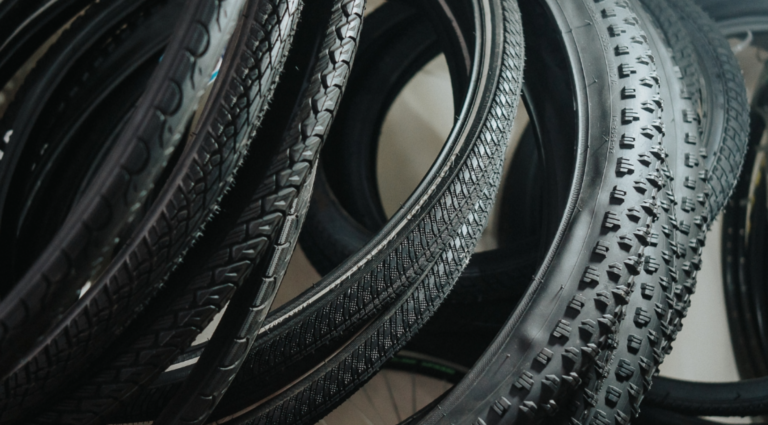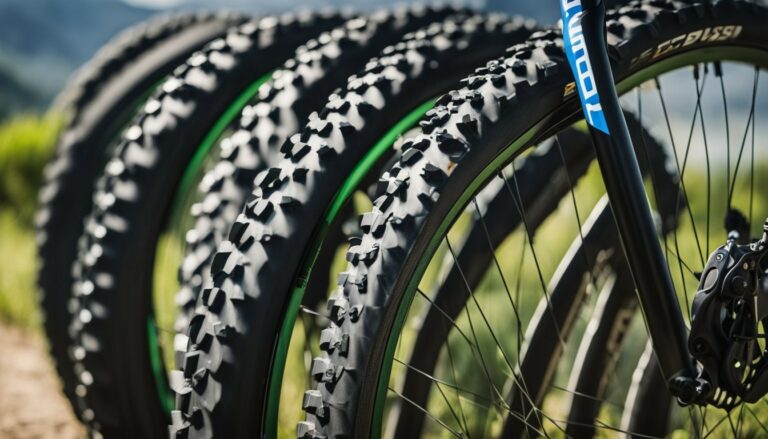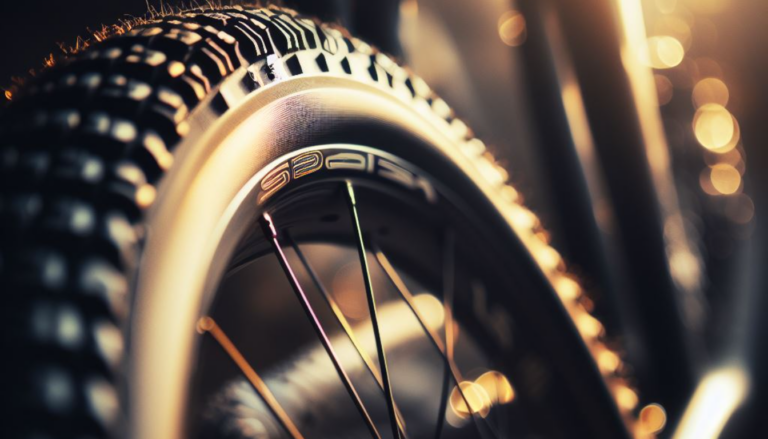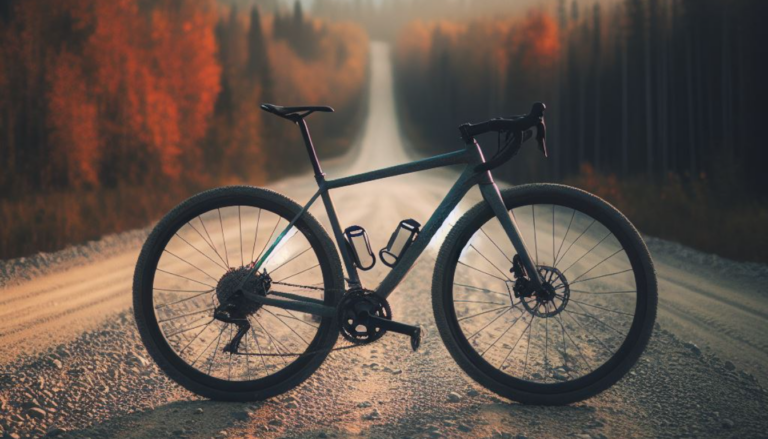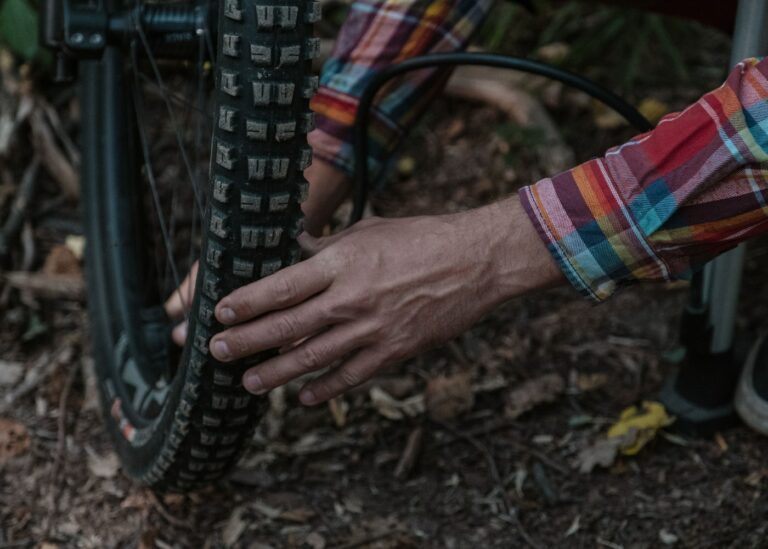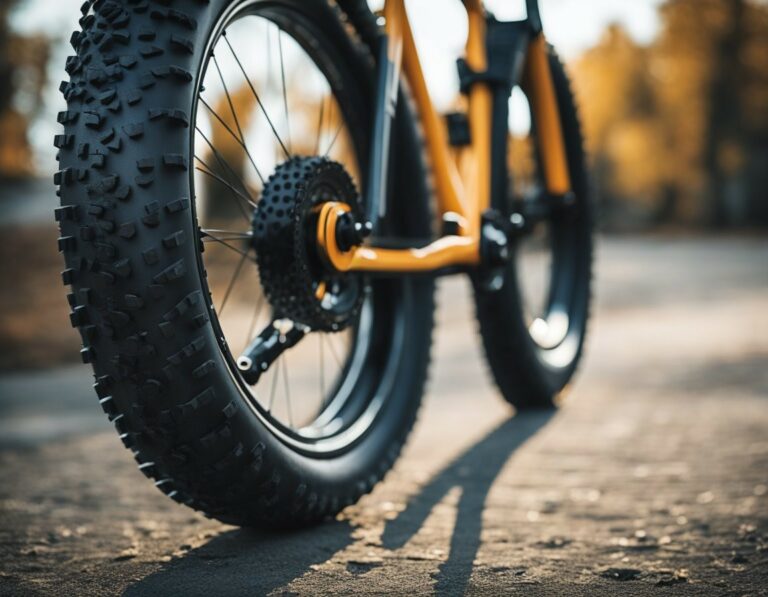Types of Bike Tires – Clincher vs Tubular vs Tubeless: How to Choose
Riders need to understand the differences between the three main types of bike tires.
These include clincher, tubular, and tubeless tires.
Each type has its unique characteristics, benefits, and drawbacks, making them suitable for specific cycling disciplines or preferences.
- Clincher tires are the most common type of bike tire, featuring an inner tube that creates an airtight seal by inflating within the tire.
- Tubular tires have an inner tube sewn within the tire casing, which is then glued onto a specific rim design.
- Tubeless tires eliminate the need for an inner tube and rely on an airtight tire-rim interface to hold the air pressure.
Key Takeaways
- Clincher, tubular, and tubeless tires are the main types of bike tires available.
- Each type of tire offers distinct characteristics, catering to different cycling needs.
- The choice of tire impacts a rider’s performance, comfort, and maintenance efforts.
Understanding the Basics
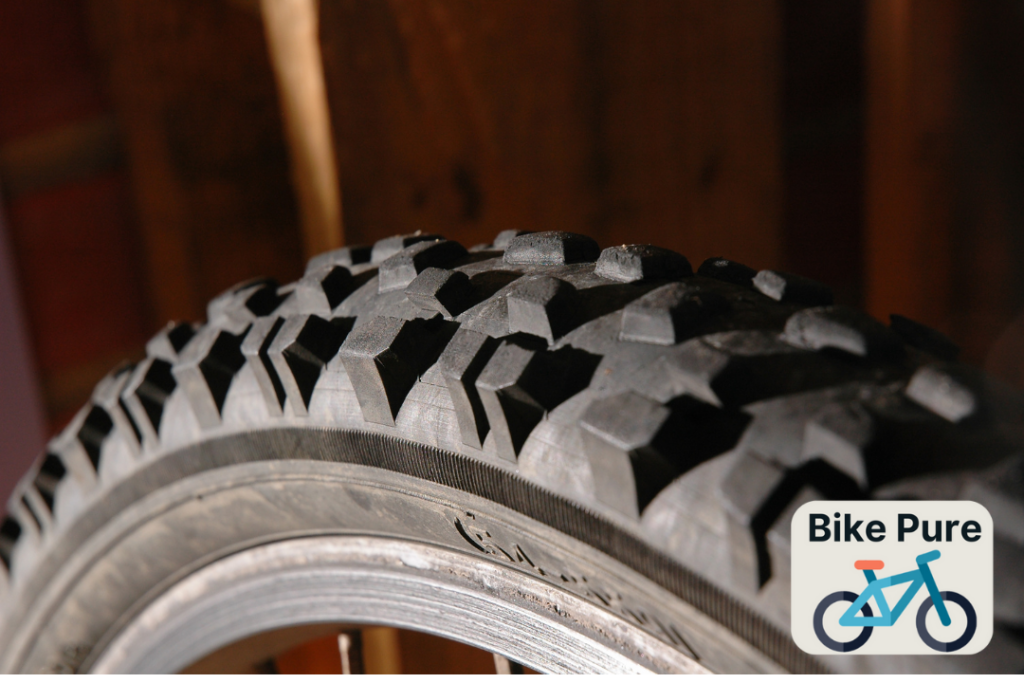
The Role of Bike Tires in Cycling
Bike tires play a significant role in the overall cycling experience. They provide traction, determine rolling resistance, and contribute to ride comfort.
There are three main types of bike tires: clincher, tubular, and tubeless. Each type has its own set of advantages and disadvantages depending on factors like terrain, performance, and personal preference.
Clincher tires are the most common type of bike tire. They consist of a tire casing and an inner tube, which is surrounded by the tire casing and held in place by the bead. Clincher tires are easy to install and remove, making them a popular choice for casual riders and racers alike. They offer a relatively straightforward tube replacement process in case of punctures.
Tubular tires, on the other hand, are designed for high-performance cycling. These tires have the inner tube sewn directly into the casing, resulting in a smoother ride and lower rolling resistance. Tubular tires are often favored by professional cyclists due to their potential for weight savings and improved handling. However, they can be more challenging to install and repair.
Tubeless tires are a relatively newer innovation in the world of cycling. They function without an inner tube, relying instead on an airtight seal between the tire and the rim to maintain pressure. Tubeless tires are known for their ability to resist punctures, as they can often self-seal small punctures with the help of sealant.
They can also offer improved ride comfort due to the absence of an inner tube. Advancements in the improvement of natural oscillation in sport mountain bike tires contribute to better performance and comfort.
Factors Influencing Tire Choice
When deciding between clincher, tubular, and tubeless bike tires, several factors come into play. These include:
- Terrain: The type of terrain you frequently ride on can greatly influence your tire choice. For example, off-road cyclists may favor tubeless tires for their puncture-resistance and better traction on rough terrain. Road cyclists, however, might prefer the lighter weight and improved performance of tubular tires. Detailed characterization of mountain bike tires has shown how tire size and inflation pressure affect performance on different terrains.
- Performance: High-performance cyclists often prioritize weight savings, rolling resistance, and handling. This can lead them to choose tubular or tubeless tires over clinchers. Meanwhile, recreational cyclists may prioritize ease of installation and repair, making clincher tires a more suitable option. For instance, recent research on the dynamics of bicycle systems has highlighted the importance of tire selection in the overall vehicle dynamics.
- Personal preference: Ultimately, the choice between clincher, tubular, and tubeless tires comes down to personal preference. Some cyclists may prefer the traditional feel and ease of use of clinchers, while others may place greater importance on puncture resistance and ride quality offered by tubeless tires.
Clincher Tires
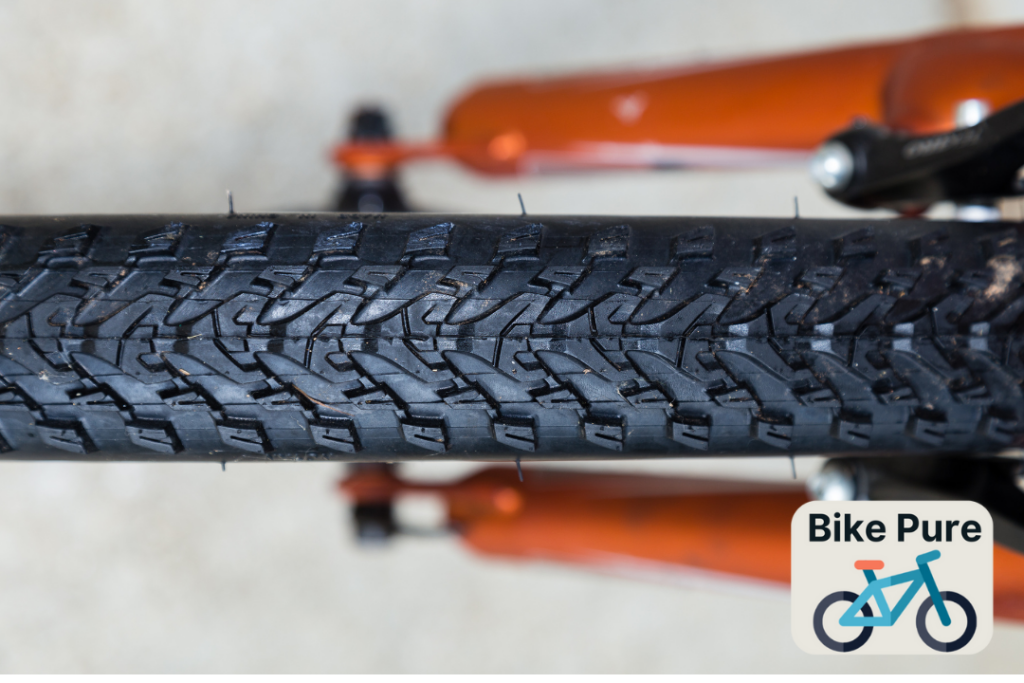
Definition and Structure
Clincher tires are the most common type of bicycle tires that you will find on road, mountain, and commuter bikes. They consist of an outer tire with a separate inner tube inside.
The outer tire features a U-shaped cross-section with beads (often made of steel wire or Kevlar) on each edge. These beads fit tightly against the rim, creating an airtight seal, while the inner tube holds the air pressure and provides cushioning for a comfortable ride.
| Clincher Tires | Advantages | Disadvantages |
| Easy to install and remove | Affordable and widely available | More prone to pinch flats |
| Straightforward tube replacement | Good for casual and race use | Heavier than tubular and tubeless |
| Widely available in many sizes | Suitable for various riding styles | Lower maximum air pressure |
Advantages
There are several advantages to using clincher tires, including:
- Affordability: Clinchers are generally more affordable than other types of bike tires, such as tubular and tubeless.
- Ease of installation and replacement: Clincher tires are relatively easy to install and replace compared to other tire types, making them an attractive option for riders who want to perform their own maintenance.
- Wide availability: Clincher tires and inner tubes are widely available in various sizes and tread patterns, catering to different riding styles and conditions.
- Puncture repair: In case of a puncture, the inner tube can be quickly replaced or patched, allowing the rider to continue with minimal downtime.
Disadvantages
There are a few disadvantages to using clincher tires, such as:
- Increased risk of pinch flats: Clincher tires are more susceptible to pinch flats, which occur when the inner tube is pinched between the rim and a sharp object, causing a puncture.
- Weight: The combined weight of the outer tire and inner tube makes clincher tires heavier than their tubular and tubeless counterparts, potentially affecting performance.
- Tire pressure limitations: Due to their design, clincher tires might not be able to sustain the same high tire pressures as tubular or tubeless tires, which could impact ride quality and performance.
Common Uses
Clincher tires are a popular choice for a wide range of cycling disciplines and activities. They are commonly used in:
- Road cycling: Clincher tires are prevalent among road cyclists due to their affordability, availability, and ease of maintenance.
- Mountain biking: Mountain bikers also use clincher tires because they provide good traction and can handle various terrains and conditions.
- Commuting: For commuters, clincher tires offer a cost-effective and easily repairable option that can handle the daily wear and tear of urban riding.
Tubular Tires
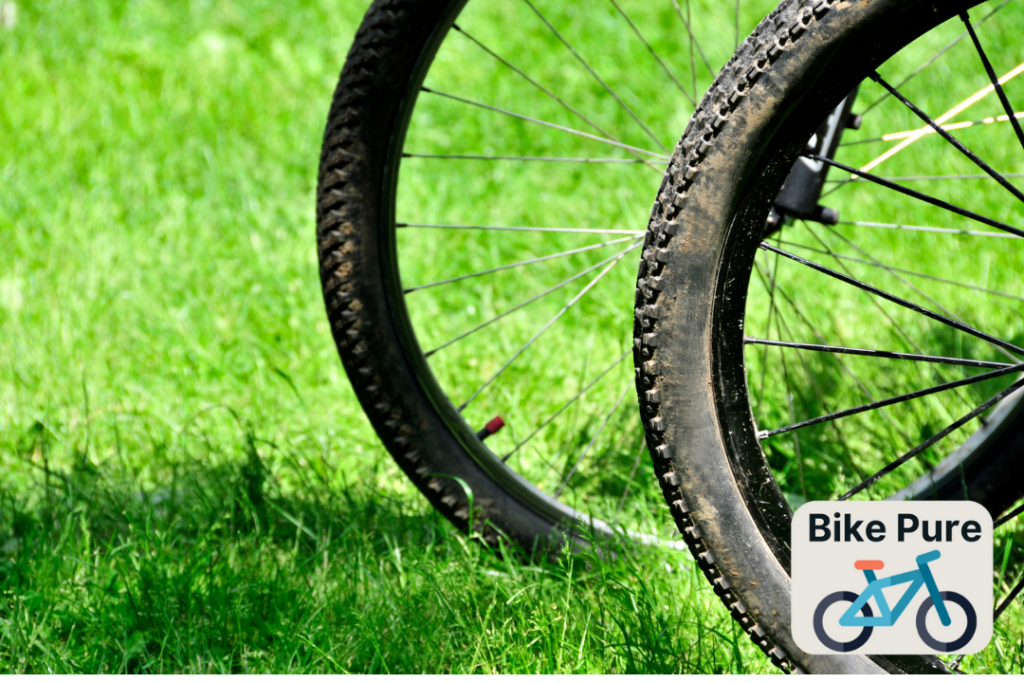
Definition and Structure
Tubular tires, also known as sew-up or tubs, are a type of bicycle tire designed for a specific type of rim. They consist of an inner tube and casing, which are stitched together, forming a sealed and airtight unit. The tire is then glued or taped onto the rim, creating a tight bond between the tire and wheel that allows it to maintain air pressure and grip during use.
| Tubular Tires | Advantages | Disadvantages |
| Lighter weight | Lower rolling resistance | More expensive |
| Superior puncture resistance | Better grip and road feel | Challenging to install and repair |
| Supple ride quality | Preferred by professional racers | Requires glue or special rim tape |
Advantages
Tubular tires offer several advantages over other types of bicycle tires. They are often lighter in weight, providing an improved power-to-weight ratio and increased efficiency for cyclists. Because of their airtight construction, tubular tires generally offer superior puncture resistance and can be inflated to a higher tire pressure than other types of tires, resulting in better grip and rolling resistance.
Tubular tires are also known for their suppleness and comfort, as the casing can more easily conform to road irregularities. This attribute can also contribute to better traction and handling, especially when riding at high speeds or on rough surfaces.
Disadvantages
Despite their benefits, tubular tires do come with some downsides. They can be more expensive than other types of bike tires, particularly clincher and tubeless varieties. The installation process for tubular tires is more time-consuming, requiring the use of glue or special rim tape to adhere the tire to the rim.
This can make it challenging to replace a flat tire while on a ride, as it requires a spare tubular tire, the necessary adhesive, and additional time for the glue to set or tape to adhere properly.
Because tubular tires are glued or taped to the rim, proper installation is important for optimal performance and safety. Improper mounting can result in the tire rolling off the rim or losing air pressure suddenly – both of which can be dangerous for the rider.
Common Uses
Despite their disadvantages, tubular tires remain popular among professional cyclists, particularly in road racing and track events. Their lightweight construction, supple ride quality, and improved performance make them a top choice for competitive athletes.
However, given their higher price point and more challenging installation process, tubular tires may not be the best choice for casual cyclists or those seeking a more budget-friendly option. In these cases, clincher or tubeless-ready tires may be a more practical and cost-effective solution.
Tubeless Tires
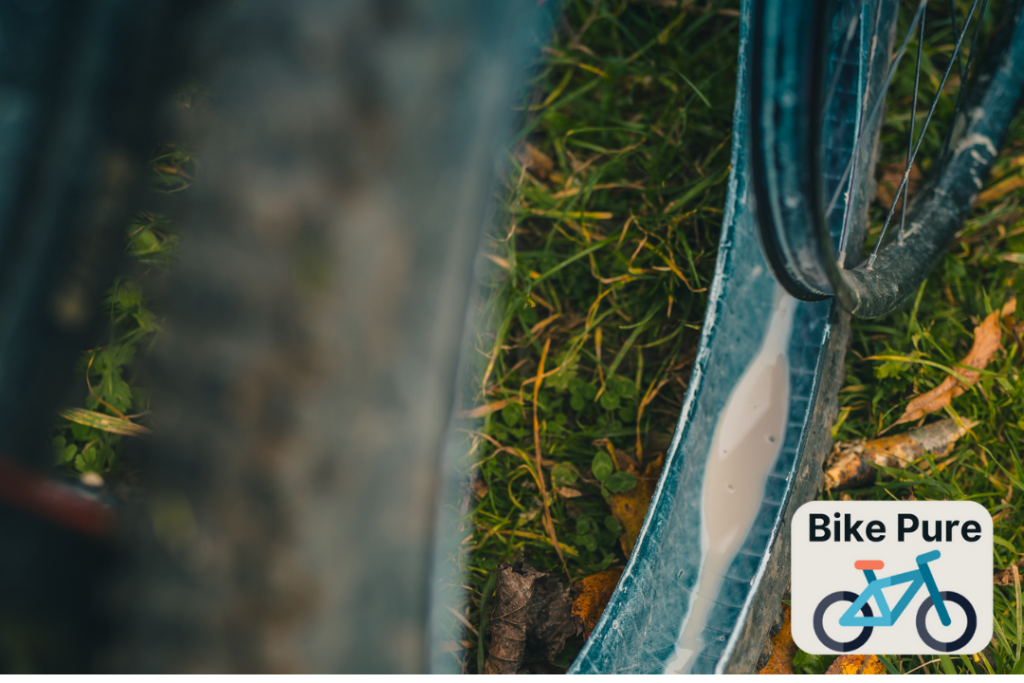
Definition and Structure
Tubeless tires are a type of bicycle tire that does not require a separate inner tube to hold air. Instead, they are designed to form an airtight seal with the rim, using a bead that locks into the rim’s profile.
In addition, tubeless tires often utilize a liquid sealant, which helps maintain the airtight seal and can self-seal small punctures in the tire casing.
Advantages
Some advantages of tubeless tires include:
- Puncture Resistance: The liquid sealant inside tubeless tires can seal small punctures almost instantly, reducing the likelihood of flat tires.
- Adjustable Tire Pressure: Riders can run tubeless tires at lower air pressures, providing improved grip, traction, and comfort without the risk of pinch flats.
- Lighter Weight: When compared to traditional clincher tires with tubes, tubeless tires can be lighter since they do not require a tube.
- Lower Rolling Resistance: Due to a more supple tire casing and the absence of tube friction, tubeless tires can offer lower rolling resistance, potentially improving speed and overall performance.
Disadvantages
Despite their benefits, there are some drawbacks to tubeless tires:
- Installation and Maintenance: Installing and maintaining tubeless tires can be more complicated than traditional clincher tires, as they require sealing with rim tape, installing a tubeless valve, and adding sealant.
- Cost: Tubeless tires and their required components, such as sealant and rim tape, can be more expensive initially than traditional clincher tires and tubes.
- Compatibility: Not all bicycle rims are designed for tubeless tires, and many riders may need to upgrade to a tubeless-ready rim or use a conversion kit to make their existing rims compatible.
- Sealant Replacement: Over time, liquid sealant can dry out and need to be replaced, adding to the maintenance requirements of tubeless tires.
Common Uses
Tubeless tires have gained popularity, particularly in mountain biking and gravel riding, where the advantages of lower tire pressure, improved grip, and increased puncture resistance are needed.
They are also becoming more prevalent in road cycling, as the technology continues to improve and riders seek the benefits of lower rolling resistance and a more comfortable ride.
Making the Right Choice
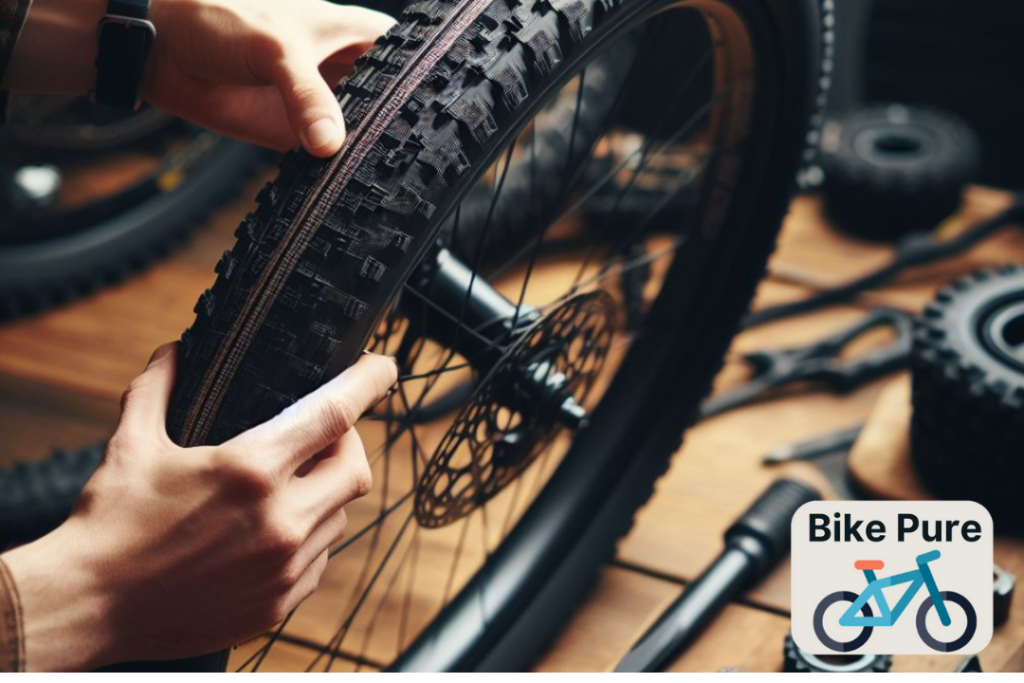
Factors to Consider When Selecting a Tire Type
When choosing the right type of bike tire for your cycling needs, it’s necessary to consider multiple factors. These factors include the type of cycling (road, mountain biking, or commuting), the terrain you’ll be riding on, and your personal preferences.
Clincher tires are the most common type of bike tire, consisting of a separate tire and an inner tube. They are generally easier to repair and replace, as well as more affordable compared to other tire types. Clincher tires are versatile and can be a suitable choice for various cycling scenarios, including road cycling and commuting.
Tubular tires are more lightweight and are often used in racing due to their lower rolling resistance and better road feel. However, they are more challenging to repair in case of a puncture and are usually more expensive than clinchers. Tubular tires are suitable for competitive cyclists who prioritize performance over ease of maintenance.
Tubeless tires do not require an inner tube, relying instead on a sealant-filled tire to prevent air leaks. This design reduces the risk of flats and punctures, making tubeless tires a popular choice for mountain biking on rough terrain. Tubeless tires can also provide better traction and smoother rides, but they may be more complicated to set up and maintain.
Recommendations Based on Different Cycling Scenarios and Rider Preferences

Here are some recommendations for choosing the right tire type based on various cycling scenarios and rider preferences:
- Road cycling: Clincher tires are recommended for most road cyclists, as they offer good performance at an affordable price, and are easy to repair and replace. However, competitive road cyclists who prioritize performance may benefit from the lower rolling resistance and better road feel offered by tubular tires.
- Mountain biking: Tubeless tires are ideal for mountain biking on rough, rugged terrain, as they reduce the risk of flats and punctures while providing better traction and control. While clincher tires can also be used for mountain biking, tubeless tires offer more reliable performance in harsh conditions.
- Commuting: For everyday commuting and urban cycling, clincher tires are a practical and affordable option. They are easy to repair and replace, ensuring minimal downtime in case of punctures. Tubeless tires may also be suitable for commuters looking for better puncture resistance and a smoother ride.
Conclusion
In the world of cycling, choosing the right bike tire plays a critical role in enhancing performance and ensuring a comfortable ride. Clincher, tubular, and tubeless tires each offer their unique advantages and disadvantages, catering to different types of cyclists and terrains.
Ultimately, the choice between clincher, tubular, and tubeless tires boils down to personal preference, the type of cycling, and the terrain on which one rides. Road cyclists may prefer the lightweight and fast performance of tubular tires, while mountain bikers and off-road adventurers might opt for the durability and traction offered by tubeless tires.
For those who want a versatile and easy-to-maintain option, clincher tires remain the most popular choice. By carefully considering each tire type’s advantages and disadvantages, cyclists can make an informed decision that best suits their needs and riding style.
Frequently Asked Questions
What are the key differences between clincher, tubular, and tubeless tires?
Clincher tires are the most common type, featuring a bead that hooks onto the wheel’s rim, and they require an inner tube for inflation. Tubular tires, on the other hand, have the inner tube sewn into the tire casing and are glued to the rim, making them lighter but more challenging to install and repair.
Tubeless tires do not require an inner tube, instead relying on a tight seal between the tire and the rim. This design offers better puncture resistance and reduced rolling resistance.
Which type of bicycle tire is best for my riding style?
It depends on the factors you prioritize, such as speed, performance, comfort, and durability.
- Clincher tires are versatile and suitable for most riders, offering the advantages of ease of installation, straightforward repairs, and a wide range of available tire options.
- Tubular tires are favored by competitive cyclists and racers due to their lightweight construction, smooth ride, and lower rolling resistance, but they can be expensive and more complicated to maintain.
- Tubeless tires are ideal for cyclists who prioritize puncture resistance and better traction, particularly for mountain biking and off-road riding.
Can I convert my clincher wheelset to a tubeless system?
It is possible to convert clincher wheels to tubeless systems using a tubeless conversion kit, which usually includes tubeless-compatible rim tape, sealant, and tubeless valves.
However, not all clincher rims are suitable for conversion, and it is important to check the wheel manufacturer’s guidelines before attempting a conversion.
How do I identify if my wheels are clincher, tubular, or tubeless?
To identify the type of wheel you have:
- Examine the tire sidewall or rim profile for any written information indicating its type.
- For clincher tires, look for a hooked bead on the rim where the tire attaches. Tubular wheels will have a deeper, concave rim bed for the tire to sit on.
- A tubeless wheel will typically have a flatter rim bed without any hooks, and the tire itself may have subtle markings on the sidewall, such as “Tubeless Ready” or “UST” (Universal System for Tubeless).
What are the weight differences among clincher, tubular, and tubeless tires?
Tubular tires are usually the lightest, followed by tubeless and then clincher tires. However, this may vary depending on the specific tire model and brand, as well as the wheel and tube combinations used.
What is the impact of tire types on performance and puncture resistance?
Each tire type has its performance characteristics and puncture resistance:
- Clincher tires have good all-around performance for various riding styles but can be slightly heavier than other options.
- Tubular tires are known for their low rolling resistance and superb ride quality. However, they might not be as puncture-resistant as tubeless tires.
- Tubeless tires offer the best puncture resistance and run at lower air pressure, granting better traction and shock absorption. They also exhibit reduced rolling resistance and can be lighter than clincher tires when combined with appropriate rims.
